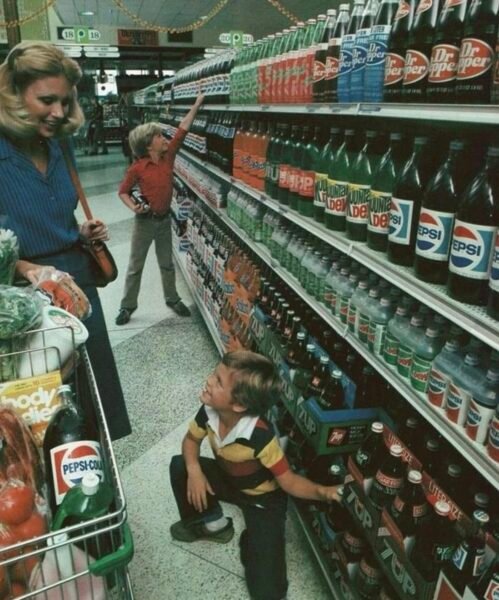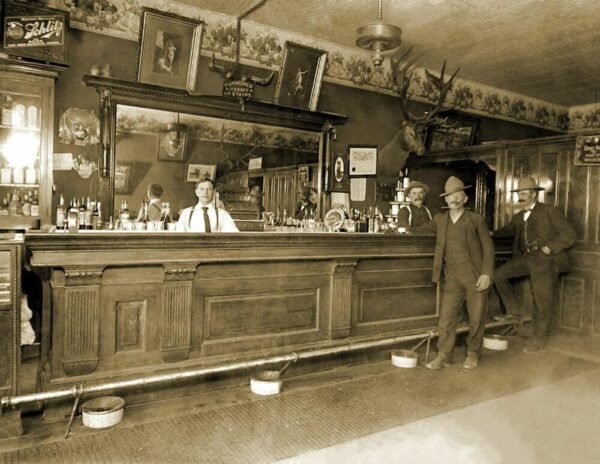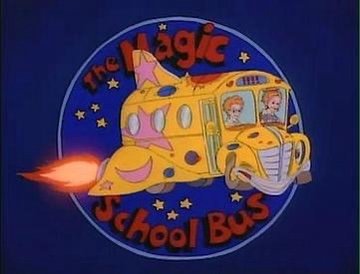The 1980s marked a significant period in the beverage industry, particularly for soft drinks. This era is often remembered for the prevalent use of glass bottles, a packaging choice that lent a distinct charm and quality to the products. Let’s delve into what made this time unique and why glass bottles were so predominant.
The Appeal of Glass Bottles
Glass bottles in the 1980s were not just containers; they were a symbol of quality and tradition. Many people recall that soft drinks tasted better in glass, attributing this to the material’s ability to preserve flavor better than plastic or aluminum. The use of real sugar instead of high-fructose corn syrup, common in later years, also contributed to this perception.

The Transition from Glass to Plastic
While glass bottles were dominant, the 1980s also saw the beginning of a significant shift towards plastic. This transition was driven by several factors:
- Cost-Effectiveness: Plastic bottles were cheaper to produce and transport, offering significant savings for manufacturers.
- Durability: Unlike glass, plastic bottles were less likely to break, reducing the risk of damage during transportation and handling.
- Convenience: Lightweight and unbreakable, plastic bottles were more convenient for consumers, especially for larger sizes like 2-liter bottles.
Nostalgia and Modern Perspectives
Today, there’s a sense of nostalgia for the glass bottle era. Many remember the experience of returning glass bottles for a deposit, a practice that encouraged recycling but has since diminished with the prevalence of disposable plastic.
The Superior Taste of Soda in Glass Bottles
The debate over whether soda tastes better in glass bottles compared to plastic or aluminum is a long-standing one, with many swearing by the superior taste of glass-bottled beverages. This preference isn’t just based on nostalgia or perception; there are tangible reasons why soda in glass bottles is often considered to taste better.
Preserving the Purity of Flavor
- Non-Reactive Nature of Glass: Glass is chemically inert, meaning it does not react with the soda inside it. This non-reactive nature ensures that the beverage’s flavor remains unaltered. In contrast, plastic and aluminum can sometimes impart subtle flavors to the drink, especially under varying temperatures and over time.
- Better Sealing Properties: Glass bottles typically have a tighter seal compared to plastic. This effective sealing helps in preserving the carbonation and freshness of the soda. The fizzier a soda, the more it tickles the taste buds, enhancing the overall drinking experience.
Environmental Factors and Perception
- Temperature Retention: Glass bottles are better at maintaining the temperature of the soda. A cold drink straight from a glass bottle often feels more refreshing, as glass doesn’t warm up as quickly as plastic or aluminum when held.
- Environmental Impact and Consumer Perception: There’s a growing awareness of the environmental impact of plastic. This consciousness can translate into the perception of taste, where consumers might find the soda from a glass bottle more appealing, associating it with eco-friendliness and higher quality.
The Role of Ingredients
- Recipe Variations: In some cases, the formulation of soda can vary depending on the packaging. For instance, certain limited editions or regional varieties might use real sugar instead of high-fructose corn syrup when bottled in glass, which can significantly affect the taste.
- Preservation of Ingredients: Glass’s superior barrier properties against air and other gases ensure better preservation of the drink’s original flavor profile, keeping the ingredients fresh and potent.
Nostalgia and Psychological Impact
- Nostalgia: For many, glass bottles evoke memories of a bygone era. This nostalgia can enhance the drinking experience, making the soda seem tastier.
- Aesthetic and Experience: Drinking from a glass bottle offers a different tactile experience than from a can or plastic bottle. The weight, feel, and even the act of popping open a glass bottle can contribute to a more enjoyable experience.
Understanding Soda in Glass Bottles
Why does soda seem to stay fizzier in glass bottles compared to plastic or cans? The perception that soda stays fizzier in glass bottles is largely due to the material’s superior sealing properties. Glass provides an excellent barrier to carbon dioxide, the gas responsible for carbonation. This means that the fizz, which is a crucial aspect of the soda’s taste and texture, is better preserved in glass bottles.
Is there a health benefit to drinking soda from glass bottles instead of plastic? Glass is a non-reactive material, meaning it doesn’t leach chemicals into the soda, especially when exposed to heat or sunlight. In contrast, certain plastics can release chemicals like BPA, especially under high temperatures. Therefore, from a health perspective, glass is a safer choice for storing and consuming beverages.
How does the environmental impact of glass bottles compare to plastic bottles? Glass bottles have both pros and cons from an environmental standpoint. On the positive side, glass can be recycled indefinitely without losing purity or quality. However, the production and transportation of glass bottles typically require more energy due to their weight and the energy-intensive process of glass manufacturing. Plastic bottles, while lighter and less energy-intensive to transport, contribute significantly to plastic pollution and are often not recycled, despite being recyclable.
Can the thickness of the glass bottle affect the taste of the soda? The thickness of the glass bottle itself doesn’t directly affect the taste of the soda. However, thicker glass can better insulate the contents, potentially keeping the soda colder for longer when removed from refrigeration. Since temperature can affect the perception of taste, indirectly, a thicker bottle might enhance the drinking experience.
Why do some premium or craft sodas still use glass bottles? Many premium and craft soda manufacturers prefer glass bottles for several reasons. Glass is often associated with higher quality and can enhance the perceived value of the product. Additionally, as glass doesn’t react with the contents, it ensures that the unique flavors of these sodas are preserved. There’s also a marketing aspect, as glass bottles can be shaped and colored for distinctive branding.
Are glass soda bottles making a comeback due to environmental concerns? There is a growing trend towards sustainability and environmental consciousness among consumers, which has led to a renewed interest in glass bottles. Some companies are revisiting glass packaging as part of their commitment to reducing plastic waste. However, the transition also depends on factors like cost, logistics, and consumer preferences.
Explore More Historical Insights at History Time Machine
For those who are passionate about delving into the past and uncovering fascinating stories, History Time Machine offers a treasure trove of articles. While the specific topic of soda in glass bottles in the 1980s wasn’t directly covered, there are many other intriguing historical narratives to explore. Here are a few articles from History Time Machine that you might find interesting:
- The Discovery and Restoration of a 2000-Year-Old Roman Silver Dagger: This article takes you back to an incredible archaeological find in Germany, shedding light on Roman history and craftsmanship.
- A Day in the Life of a 1950s Milkman: Step into the shoes of a 1950s milkman and explore what life was like in this iconic profession that played a vital role in mid-century American neighborhoods.
- Robin Williams: A Glimpse into His Early Life with His Mother: Discover the early life of Robin Williams, a beloved comedian and actor, and how his upbringing shaped his extraordinary career.
As an Amazon Associate we earn from qualifying purchases through some links in our articles.




